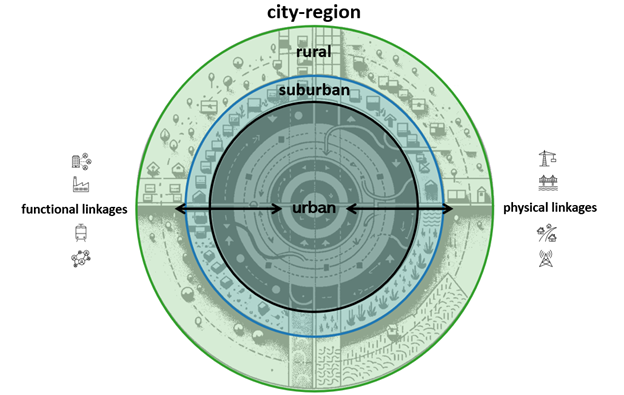New Publication on Urban-rural Linkages in Local Spatial Plans
Theresia Morandell, Michael Wicki, and David Kaufmann recently published a new article in Landscape and Urban Planning. The article examines to what extent and how urban-rural linkages feature in spatial plans adopted by city administrations. They find that both physical and functional interdependencies between core cities and their surrounding municipalities within the so-called city-region are addressed.
Rapidly advancing urbanization deepens cities’ interdependencies with surrounding suburban and rural territories. Yet, there is limited comparative understanding of how these linkages are practically addressed through spatial planning. To what extent and how do urban–rural linkages feature in the contents of spatial plans adopted by city administrations? The article employs Natural Language Processing (NLP) tools for automated content analysis, topic models in particular, to analyze 257 municipal spatial plans from 125 so-called intermediate European cities. The study sheds light on the variety of planning approaches and policy areas that are addressed in municipal planning across 20 European OECD countries.
The authors find that urban-rural linkages are addressed in intermediate European cities through both statutory (legally mandated) and non-statutory (informal, strategic) spatial plans. While statutory plans emphasize physical linkages between core cities and their surrounding areas (e.g. interlocking of built-up areas and settlement structure), non-statutory plans focus on socio-economic linkages such as commuting dynamics, city-regional development, and economic planning. The complementary use of statutory and non-statutory plans enhances the governance of urban-rural linkages at the city-regional scale. Through its comparative insights into different European planning contexts, the study contributes to a better understanding of complex urban-rural dynamics.
